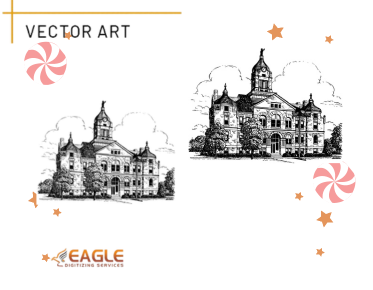Mastering Embroidery Digitization: From Artwork to Stitch
The Embroidery Digitization Process
Introduction to Embroidery Digitization
Embroidery digitization is the process where original artwork, such as sketches, designs, graphics, or pictures, is scanned and transformed into a digital file that can be used by an automated embroidery machine. This transformation requires the use of digitizing software, where the operator adjusts the image to direct the embroidery machine on how to sew the actual stitches. This process turns a scanned image into a series of stitches essential for embroidery.
Scanning and Adjusting the Image
Initial Scanning and Software Adjustment
When the original artwork is scanned using digitizing software, the operator must adjust the image within the software. This adjustment tells the embroidery machine the exact way to sew the stitches. The software processes the scanned image into numerous stitches required for embroidery, converting the digital image into a format the embroidery machine can interpret and execute.
Color and Thread Selection
Choosing Threads and Parameters
Using the embroidery digitizing software, the operator decides on the colors of thread to be used and any special threads such as metallic, synthetic, or natural fibers like cotton. The operator determines where these threads will be placed in the digitized design. Additionally, they set the required stitch parameters, which can vary in thickness and density to create the desired design. The types of stitches, such as zigzag or cross-stitch, are also selected during this phase.
Saving the Digitized Design
From Digital File to Embroidery Machine
Once all variables are chosen and verified, the operator saves the design to a disk (CD) or a secure digital (SD) card or similar solid-state memory. The scanned and manipulated image, saved in a format the sewing machines can understand, is then loaded into the embroidery machine to produce the embroidered image.
Software and Compatibility
Selecting and Using Embroidery Software
There are numerous software options available for embroidery digitization. While most stitching machines come with basic embroidery software, many digitizing professionals opt for more advanced programs that offer greater flexibility and additional features. These advanced software options are available for Windows, Linux, and Mac systems, with many being freeware or shareware that can perform almost all functions of commercial programs at a lower cost.
File Format Selection
Importance of Correct File Types
After the scanned image is processed, the prepared image must be saved in an appropriate file format. There are over thirty different file types, so selecting the correct format for the specific embroidery or digital sewing machine is crucial. Different machines require different file formats to accurately reproduce the original artwork. The correct file type is typically found in the machine’s owner's manual or on the manufacturer’s website.
Finalizing the Embroidery Design
Loading and Embroidering
Once the embroidery digitizer file is saved in the specified storage media, it can be loaded into the embroidery machine's memory. The operator then applies the embroidery to the materials, following the instructions encoded in the digitized file.
Conclusion
Ensuring Quality and Compatibility
The file types are critical for correctly digitizing the artwork, and operators must ensure they choose the proper format for their machine. If unsure, the necessary file type information can usually be found in the owner's manual or on the manufacturer’s website. For specific requirements regarding embroidery digitization and machine embroidery services, contact us for a quote.
For your specifications with regard to embroidery digitizer and machine embroidery solutions, please call us or give us a call for any quote- www.eagledigitizing.com


.png)
